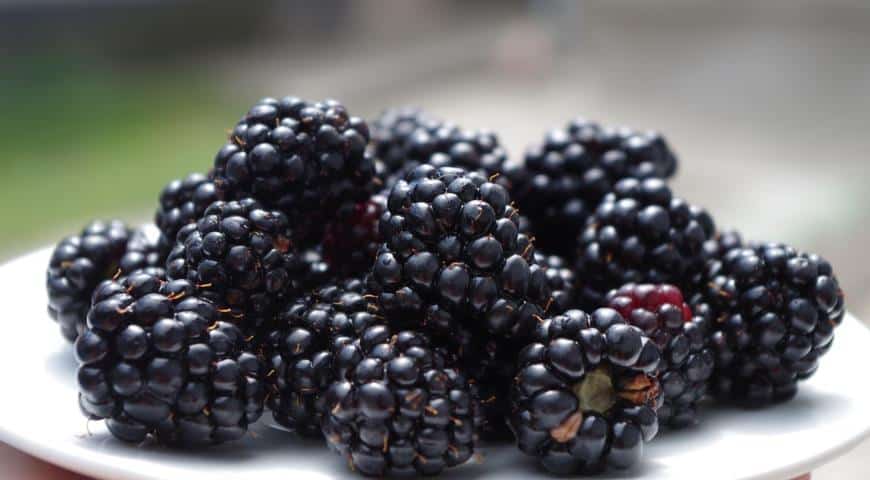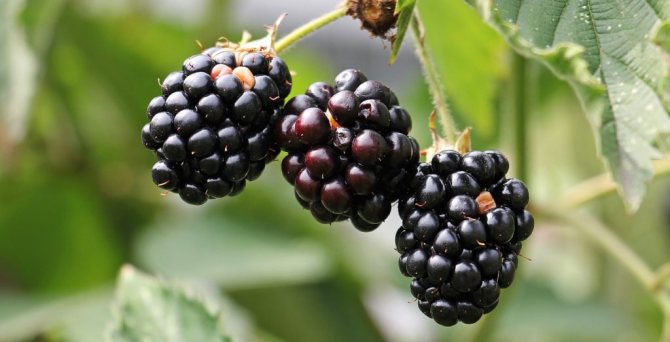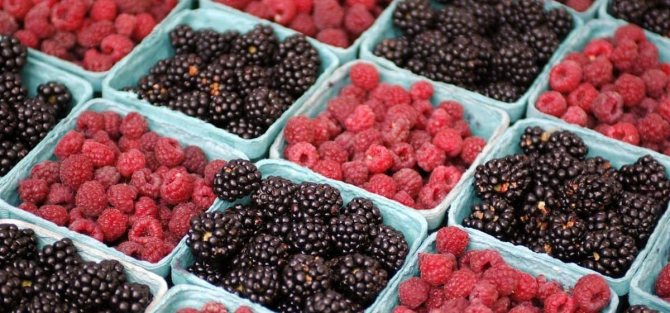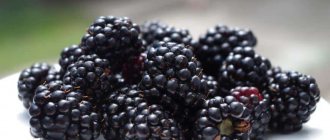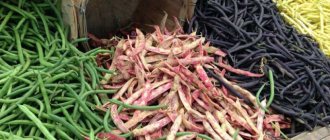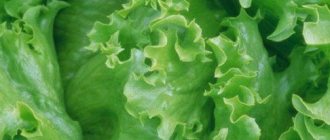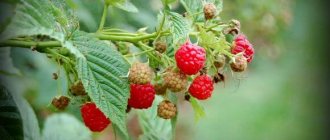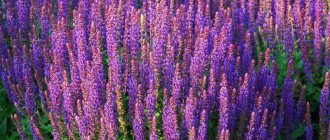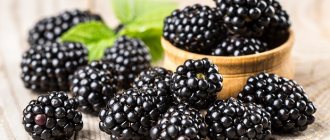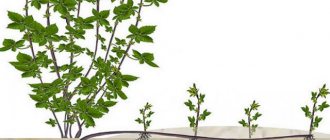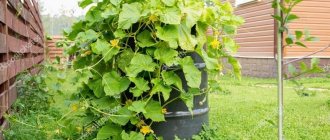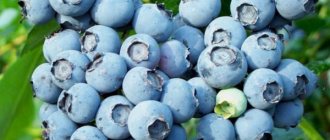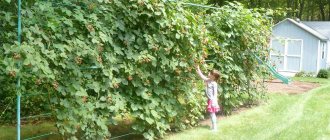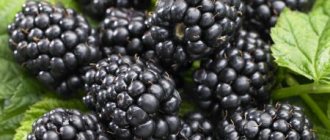Blackberries in the country provide tasty and healthy berries for the whole summer. The plant has a large number of varieties. Most of them are distinguished by long shoots with a whitish bloom and sharp thorns. There are also varieties without thorns. The color of the berries can be different, but they are all fragrant and sweet.
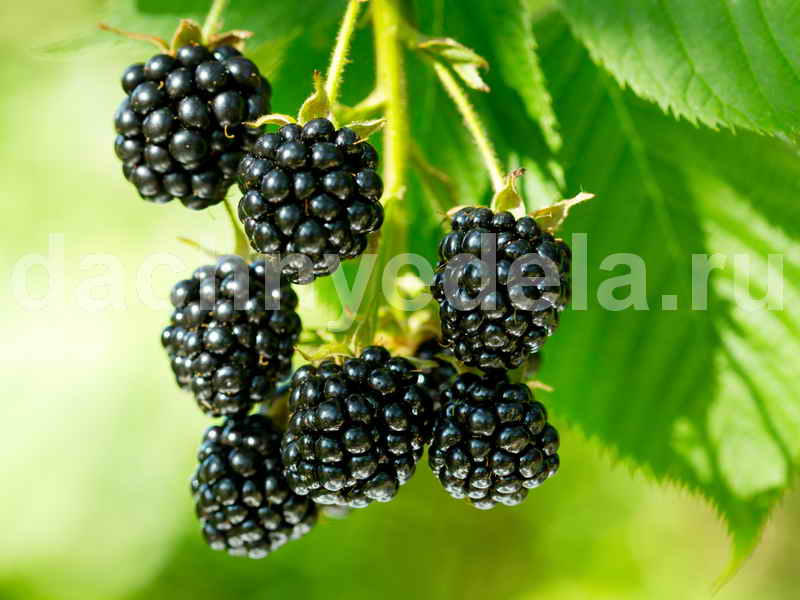
Growing blackberries. Illustration for this article is used under a standard license.
Features of growing blackberries
Site selection and soil preparation
Plant care includes regular watering, loosening the soil, weeding, feeding and taking preventive measures.
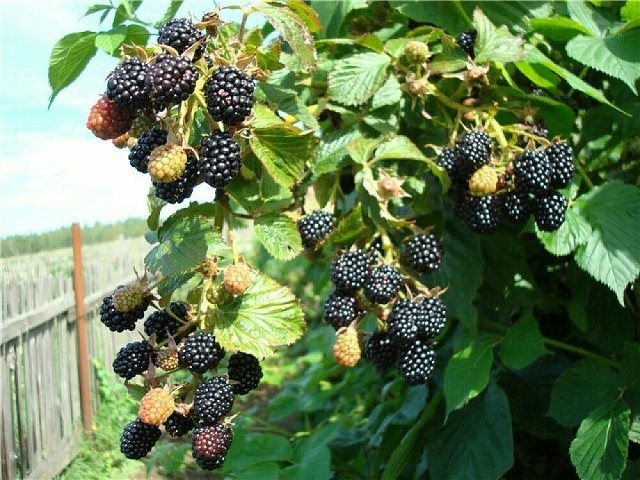

Blackberries can be planted in a well-lit area of the garden and placed on a wire trellis.
Blackberries can be planted in a well-lit area of the garden and placed on a wire trellis. A good option is to plant a shrub (liana) near a building with a well-warmed wall and protected from the winds. It can be not only brickwork, but also an ordinary gazebo in the garden.
Preference is given to moist, fertile soils, deeply drained. You can use loam or sandy soils for planting. The best predecessors of blackberries on the site are considered: legumes, cereals, field.
Before planting blackberries, the soil must be cleared of all weeds. As new weeds appear, they need to be removed, and the soil between the rows should be loosened about 5-6 times in one season. Around the bushes, it is advisable to slightly loosen the soil to a depth of 6-7 cm about 3 times during the flowering period of the plant.
You can use loam or sandy soils for planting.
Mulching with rotted manure can help protect the bush from weeds and prevent the formation of a dry crust around the root zone. For these mulching, peat compost with a layer of about 5 cm is also suitable, which will become a source of adequate nutrition for the blackberries. The peat layer will reliably retain moisture, which will reduce irrigation.
Lighting
The plant is considered to be very sensitive to light: it needs large amounts of sunlight. However, during the ripening period of the fruits, the shrub must be shaded so that the sun does not burn the foliage and spoil the presentation of future fruits. If there is no way to place a bush in such a zone of the site, you can pull on shading nets that allow air to pass through perfectly.
Watering
Young seedlings need to be watered regularly for one and a half to two months. In dry weather, it is advisable to increase watering.
During the fruiting period, watering should be further increased.
During the fruiting period, watering needs to be further increased. It is not recommended to use well water for watering the soil, as it is too cold and can harm the bush. The best way is to collect rain or tap water in some kind of large container, and stand for two days in the sun.
Planting blackberries
If you are faced with the question of how to grow a blackberry in the country, you should heed the recommendations regarding its planting. To reduce the likelihood of planting failure, it is best to purchase seedlings from nurseries. They must have a fully formed root system and two branches at least half a centimeter thick.
To reduce the likelihood of planting failure, it is best to purchase seedlings from nurseries.
Unlike many rosaceous horticultural crops, this berry should be planted during the spring months, not fall. The best period is the end of April - beginning of May.
It is important that the soil is completely warmed up by the time of planting.
Before planting a crop, it is necessary to bring the soil in accordance with the requirements of agricultural technology. When digging holes, you need to mix the reclaimed soil with organic and mineral fertilizers and cover the blackberry seedlings with this soil.
Depending on the type of plant, they leave between the bushes:
- With the bush method of cultivating blackberries, two seedlings are placed in one hole and placed at a distance of 1.8 m from each other.
- With the strip growing method, typical of varieties with pancake shoots, the sprouts are planted in a long hole continuously along a chain. The distance between plantings of seedlings should be about a meter. If more than one row is planned, it is tedious to leave a distance of about 2 meters between them.
When digging holes, you need to mix the reclaimed soil with organic and mineral fertilizers and cover the blackberry seedlings with this soil.
The blackberry seedling is lowered into the hole, the roots are straightened and the stem is covered with soil mixed with fertilizers so that the first bud is about 2-3 cm above the ground.
After planting, it is necessary to install trellises, to which the plants will then be tied.
Short description
Garden blackberry is a common shrub with long curly lashes dotted with sharp dense thorns. Now, thanks to the painstaking work of breeders, new varieties are appearing. Their advantage is that there are no thorns, and the plants themselves perfectly tolerate drought and frost, are resistant to pest attacks and are almost not susceptible to diseases.
Some varieties at home require tying to supports. The process is not complicated, but the shrub takes on a well-groomed look, and whips with bluish-black berries decorate the site. Harvesting is also much easier, which is especially appreciated by summer residents. I am also not a fan of wading between thickets in an attempt to pick berries, so almost all the bushes are on my supports.
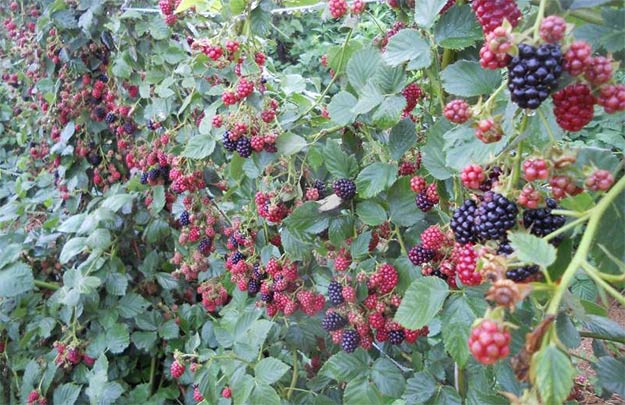

Blackberry inflorescences, which cover it in summer, are excellent honey plants. You are a happy owner of an apiary, then the toiler-bees will certainly provide honey, and the taste of sweet nectar will be delicious, and I’m not talking about the aroma at all - it’s quite difficult to convey in words.
You can grow a blackberry using several breeding methods:
- from seeds;
- cuttings;
- saplings.
I want to say right away that the easiest way to grow shrubs on the site is to purchase good seedlings in proven nurseries. Correctly planted cuttings also take root well. But breeders grow a delicious berry with seeds for breeding new varieties. There is no desire to engage in selection, it is better to resort to the traditional method and plant seedlings without any hassle.
Fertilizing culture
If a blackberry has settled in the garden, the care and cultivation of the plant requires additional feeding manipulations. The berry needs large amounts of nutrients.
If a blackberry has settled in the garden, the care and cultivation of the plant requires additional feeding manipulations.
Systematic feeding is the key to a good harvest and the appearance of a new growth.
Since the root system of the berry is close to the soil, all procedures must be carried out as carefully as possible. The frequency of fertilization directly depends on the type of soil. For feeding, the following compositions are required:
- Organic fertilizers containing nitrogen should be used in moderation, since they tend to delay the ripening of fruits and reduce the plant's resistance to low temperatures. Ammonium nitrate has proven itself well.
- Potassium fertilizers can be applied every year, but chlorine-containing fertilizers should be avoided to avoid damage to the stem and leaf.
- Annual application of manure is considered a good substitute for phosphate fertilizers. In the absence of manure injection, phosphorus fertilizing must be carried out every three years. This will make up for the lack of nutrients.
- On acidic soils, liming is necessary. Lack of magnesium and iron leads to yellowing of the leaves, and later death of the tops of the stems.
Organic fertilizers containing nitrogen should be used in moderation Potassium fertilizers can be applied every year Annual manure application is considered a good substitute for phosphorus fertilizers On acidic soils, liming should be carried out
Shrub propagation
Blackberry cultivation technology includes special types of shrub reproduction. You can plant a berry culture in any season except autumn. The breeding method depends on the type of plant:
- creeping varieties are seated with horizontal and apical layers;
- bush varieties - by dividing, cutting and planting root cuttings.
- The first method (horizontal layering) is considered one of the simplest. It is enough to dig a climbing shoot into the soil in the spring so that it gives roots, and then shoots. When the layering is formed, it is separated and planted in the place designated for this.
- When growing blackberries with horizontal layering, the stems lean to the soil, and then fall asleep along the entire length. As a result of the procedure, several bushes are formed, which are separated and planted.
- Every year, several root suckers are formed around the bush, which must be separated and planted separately. But you only need to choose plants that have reached a height of 10 cm.
- The division of the bush is used for varieties that are not capable of sprouting. The main task with this method is to divide the shrub in such a way that all parts are fully developed and can take root.
- Cutting is used for especially valuable varieties of berries. The method consists in cutting cuttings from the upper third of the stem. It should have buds, leaves and part of the stem. The cuttings are treated with a root-forming agent and planted in small containers (cups) in which a mixture of perlite and peat is prepared. The containers must be placed under a film and kept in such a greenhouse for about a month until roots form. The humidity should be about 95%. After that, the seedlings are rooted in the open field.
Blackberry pruning
Blackberries require regular pruning. This procedure is quite troublesome, but it is necessary for ease of maintenance and harvesting, as well as for the health of the shrub. Processing is carried out using a secateurs. In the spring, it is necessary to remove dry and broken branches, frozen tops to the first bud (healthy).
The bushes of the first year need to be cut twice: at the end of spring, the tops are usually shortened by about 7 cm, and in the middle of summer, 10 cm of the tops of those shoots that have grown to half a meter are cut off. Of these, only strong branches are left (up to 10 pieces).
Blackberries require regular pruning.
Throughout the summer, it is necessary to remove the emerging shoots of the roots, leaving only those that appeared in the spring. They need to be shortened at a height of 1.5 - 2 meters.
How to care
Within six months from the moment the bush was planted, shoots formed on it. They are strong enough to produce rich crops. This happens closer to autumn. Throughout spring and summer, it is necessary to provide the bushes with proper care.
If the bushes are two years old and have already borne fruit, then they need to be trimmed regularly. In the fall, create a shelter for the berry plant so that it does not freeze in winter. Every year throughout the spring, the blackberries need to be fed. For this, urea is used. There is 25 g per 1 m2.Once every 3 years, fertilize the bushes with humus. 10 kg of fertilizer is applied to each bush. It will also be useful to learn about the cultivation and care of blackberries in the Urals.
For full growth, you will have to carry out regular watering. At the same time, it should be moderate, since stagnant water will lead to the death of plants. But the soil should not dry out either, since the bush will not bloom and bear fruit from this.
For several years, water the plant using the fan-shaped method. But to raise and tie the growing loops. And young shoots that have just begun to grow should be directed to the center of the bush. In the fall, blackberries do not bear fruit, so it is necessary to prepare the bushes for wintering. Old shoots must be cut off completely.
As soon as spring has come, free the bushes from the protective coating. This manipulation must be performed before the kidneys are formed. After that, you can give the bush a shape and raise the growing shoots. Perform similar activities until the bushes begin to bear fruit.
Diseases and pests of the bush
How to grow blackberries to avoid crop loss due to disease and insects? To do this, it is imperative to regularly inspect the bushes and note any changes in their condition. If a lesion is detected in a timely manner, garden culture can be preserved. Blackberries are prone to diseases like strawberries and raspberries. Among the most common are the following lesions:
- Anthracnose, which attacks shrubs in late May or early summer. It manifests itself as purple spots that grow over time and reach the bark of the tree, forming gray ulcers with a burgundy border. The same purple spots appear on foliage. Affected shoots may die in the coming winter. To avoid damage, you need to fertilize the bushes with peat and make sure that the weeds do not clog the plant.
- Rust, which is the appearance of orange-brown dots that lead to pads on the underside of the leaf. If the disease is left untreated, it can lead to a decrease in the yield by more than half. As a preventive measure, treatment with Bordeaux liquid is used. You can repeat the procedure after picking the berries. If the plant has already undergone a disease, sulfur preparations can be used.
- Septoria (white spot) spreads everywhere, affecting leaves and shoots. It is expressed in the appearance of light brown spots, which fade over time.
- Purple spot (didimella) damages the buds and leaves fall off. The stem can also dry out. The disease begins with the appearance of brown-purple spots.
- Botrytis (gray rot) develops in wet weather. To avoid such a development of events, the bushes must be planted so that they are well ventilated.
- Powdery mildew covers the fruits and the plant itself with a loose bloom of white. You need to fight it in the same ways as with rust.
Anthracnose Rust Septoriasis Purple spot Botrytis Powdery mildew
The main pests of blackberries are:
- mites of various types (spider, raspberry and hairy);
- raspberry kidney moth;
- weevil;
- raspberry beetle;
- caterpillars;
- walnut;
- aphid.
Blackberry pests
Insecticides are used to control insects. Actellik and Karbofos, which are sprayed on the bushes, have proven themselves well. As a preventive measure, they should be used in the spring before the first buds appear or in the fall after the end of the harvest.
Variety selection
In order for the cultivation of garden blackberries to be effective, it is necessary to select varieties that best suit the climatic conditions. In our lane, the following types have proven themselves well:
- Agave is an American variety with high winter hardiness. The yield of the plant reaches 4 kg from one bush. It is believed to be resistant to several diseases.
- Thornfree is a hybrid blackberry without thorns. Differs in early ripening and high yield. Unpretentious in care and winter-hardy. Combines the features of the curly and upright species.
- Karaka Black is one of the new varieties of early maturing blackberries. Possesses high taste, sugar content and juiciness. The disadvantage is not too high resistance to low temperatures.
- Netchez is a cherry-flavored blackberry. The variety ripens early and does not need winter shelter.
- Polar is another frost-resistant variety that does not need to create shelter during freezing periods. The bushes are compact and productive.
- Valdo is a winter-hardy miniature shrub that does not require shaping.
Does blackberry grow in the Urals
Many gardeners are interested in the possibility of planting blackberries in the Urals. The Urals are characterized by a harsh climate with severe frosts, cold winds and few sunny days. To get the best results in growing this berry, you must first select a variety. For the climatic conditions of the Urals, varieties that are frost-resistant and adaptable to sudden temperature changes are suitable. It is necessary to choose a variety that will have time to yield before the onset of frost.
Good crop care will help the plant grow and mature in adverse weather conditions in this region.

